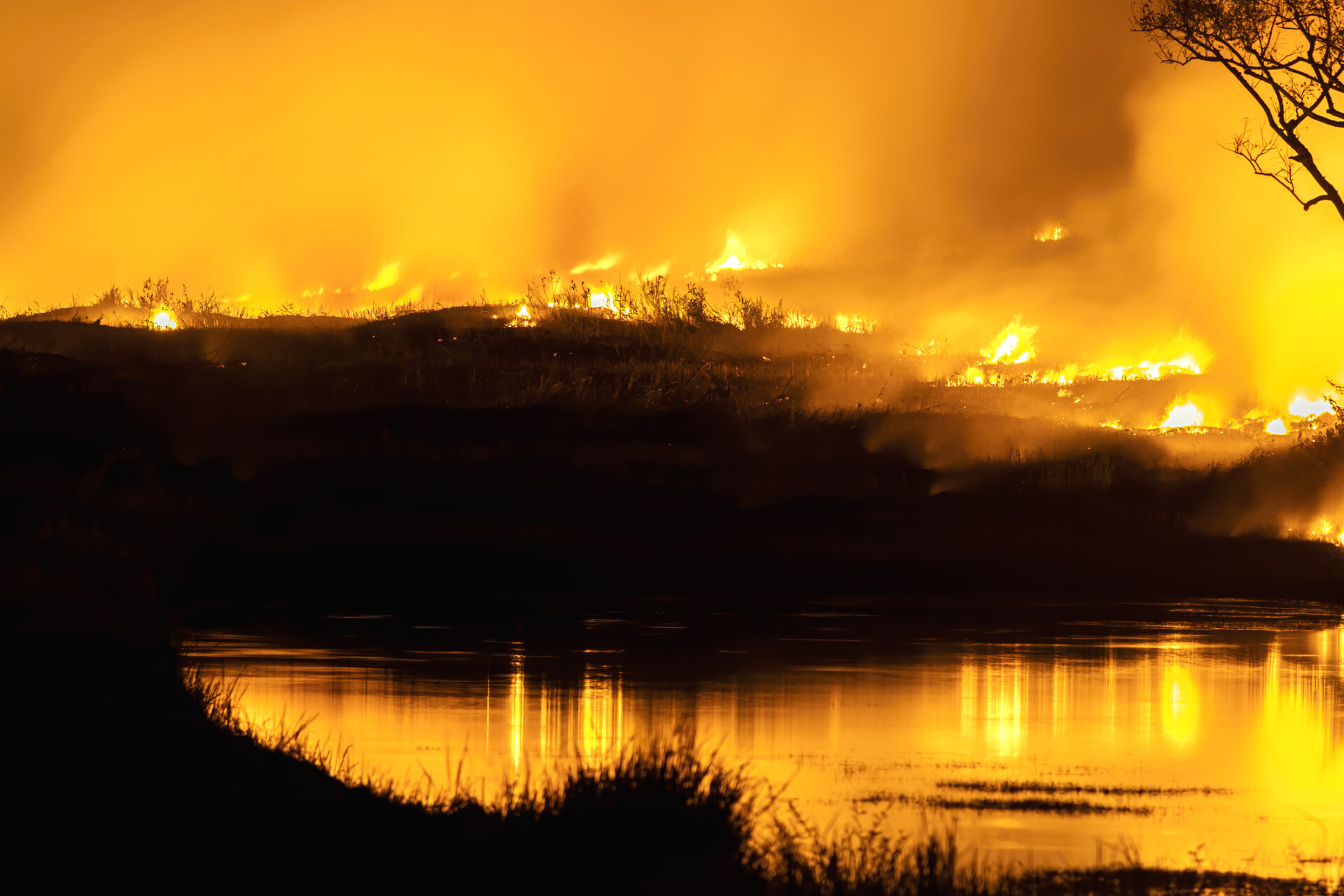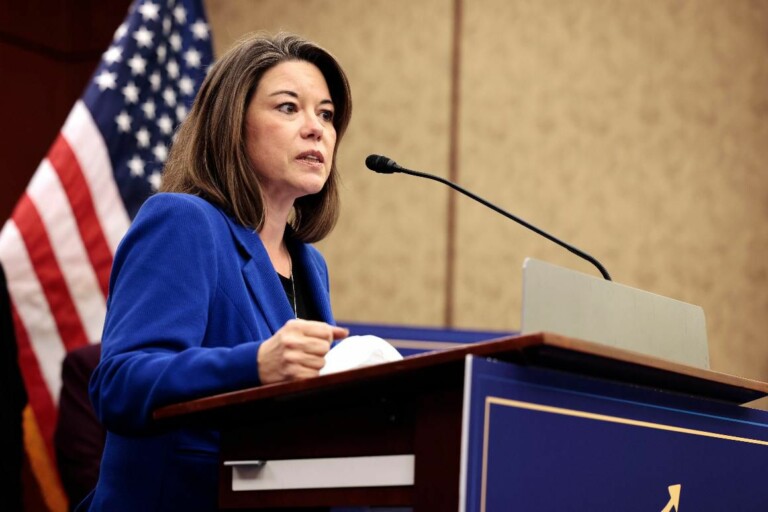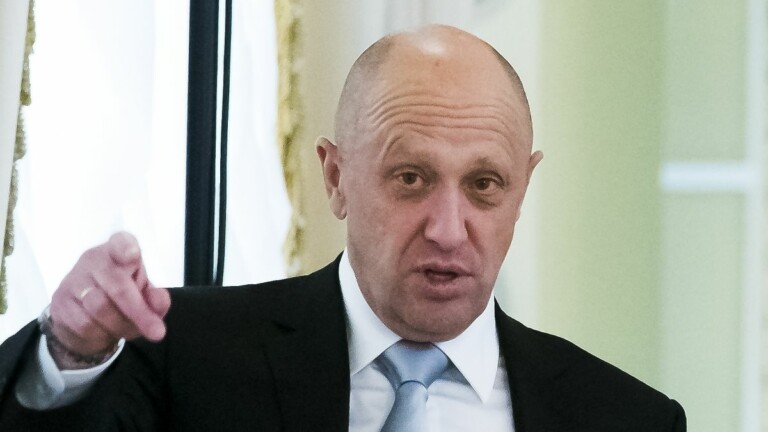The latest UN climate report was just released, and it’s brought the usual doom loop of grave headlines as emissions keep rising. The way out isn’t getting people to “believe the science” but building a pro-worker climate politics that can win power.
On Monday, the Intergovernmental Panel on Climate Change released its “synthesis” report summarizing the findings of its sixth assessment (the last occurred in 2014). The findings are painfully familiar: the world is falling far short of its emission goals, and without rapid reductions this decade, the planet is likely to shoot to beyond 1.5 or even 2 degrees Celsius of warming this century (we are at 1.1 degrees now).
We seem to be stuck in a doom-loop news cycle where scientific reports create headlines, and earnest climate commentators insist the new report represents a true “wake-up call” for action, and then . . . emission keep rising. They hit a record once again in 2022.
The world of climate politics appears to exist in two completely different worlds. There is a largely liberal and idealist world of climate technocrats where science informs policy, and there is the real, material capitalist world of power.
In the liberal world, the base assumption is that if we can communicate the science better — or as one former Extinction Rebellion spokesperson argues, if we can try “to tell and hear and live in truth” — our political systems will respond with action. As the science becomes more terrifying, the moral righteousness of this approach only seems more vindicated with each new report.
Another crucial aspect of this liberal worldview is to map out and model precise pathways to decarbonization. You probably heard the Inflation Reduction Act is projected to spur a 40 percent reduction in greenhouse gas emissions by 2030; what you don’t hear is that, according to the same models, doing nothing gets us 24 to 35 percent. As emissions keep rising, the models become more fantastical in terms of what is required, but they still give an army of climate technocrats the ammunition to supply the policy commentariat with a message that following the science is still possible — if we simply start right away.
The other world is very different: it is a world of capitalist and state power. In this world, the market says fossil fuels are as profitable as ever. ExxonMobil announced record profits in October and then again in January. Even before the Russian invasion of Ukraine, the coal industry — the worst of the fossil fuels — was posting windfall profits. The Financial Times recently reported on hedge funds making absurd 43 percent returns betting on coal. One hedge funder bluntly remarked, “It’s almost immoral not to invest in coal because of the reliance [by so many countries] on fossil fuels.”
It is this brute world of power that has also led our alleged climate president, Joe Biden, to approve the Willow Project in Alaska. The move has rightly triggered denunciations of hypocrisy because, upon taking office in 2021, the Biden administration vowed to embark on “a whole-of-government [climate] effort in every sector of the economy.” The Willow “carbon bomb” is projected to unearth six hundred million barrels of oil, “effectively adding the emissions of the entire country of Belgium, via just one project.” The New York Times reports, “ConocoPhillips plans to install devices called thermosyphons in the thawing permafrost to keep it solid enough to support the heavy equipment needed to drill for oil — the burning of which will release carbon dioxide emissions that scientists say will worsen the ice melt.” This is how the world of power plans for a warming world.
Yet we shouldn’t act as if there is zero reason for Biden’s turnabout. He understands, like every president before him, that surging gasoline prices are an enormous political liability in a society where the vast majority of workers still require the dirty fuel to get to work. As long as Biden acts as if his administration is helpless in the face of fossil fuel price volatility — and only increased supply will bring the price down — political viability will continue to hinge on cheap fossil fuel prices.
The Green New Deal was a call to reject the idea that we can cede climate solutions to markets and price swings. Yet this is exactly what the Biden administration still believes. In 2021, Biden’s climate envoy, John Kerry, insisted, “I think we’re on the cusp of a massive transformation . . . ultimately, the market is going to make the decisions, not the government.”
For all the grandiose claims of “industrial policy,” the Inflation Reduction Act is simply a generous set of market incentives — tax credits, to be exact — that aim to spur mostly private investment in clean energy and private consumer purchases of low-carbon commodities like electric vehicles and heat pumps.
If Biden were really acting according to the science, rather than approve Willow he would launch a large-scale plan of public investment to build the clean energy transition we need. Such a plan could only be viable politically if accompanied with serious redistributionist programs that shield workers from any energy price spikes.
A public works plan to vastly expand union jobs and manufacturing alongside guaranteed stable and affordable energy prices for the working class could actually create the mass constituency needed to intervene in the real world of capitalist power and climate politics. But no one in the ruling class seems willing to challenge the capitalist stranglehold over the energy sector to embark on such a project. And the Left, for the time being, remains too weak. As such, the liberal climate technocrats and those with real power remain worlds apart.
This will not be the last terrifying scientific report on climate change. But the only path out of the dull repetitiveness of increasingly dire headlines is a politics that acknowledges that science and truth won’t automatically lead to change. The struggle for the planet is a struggle for political power.
Source: Jacobin







